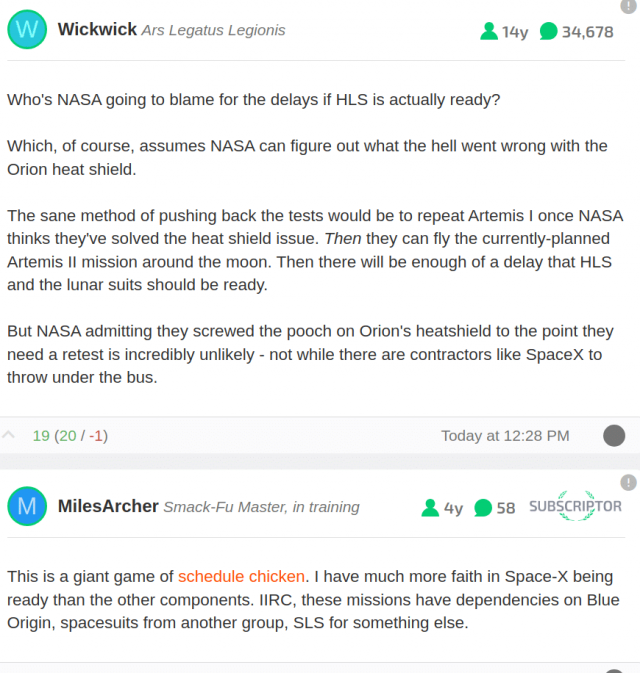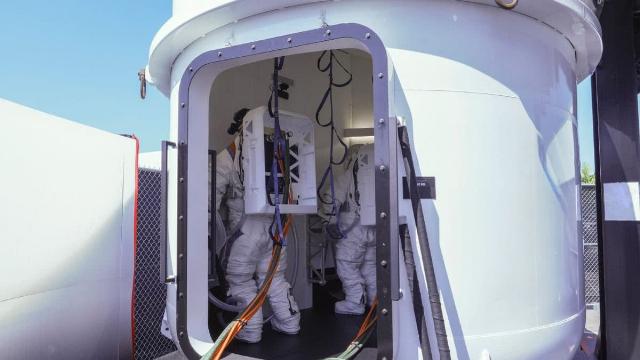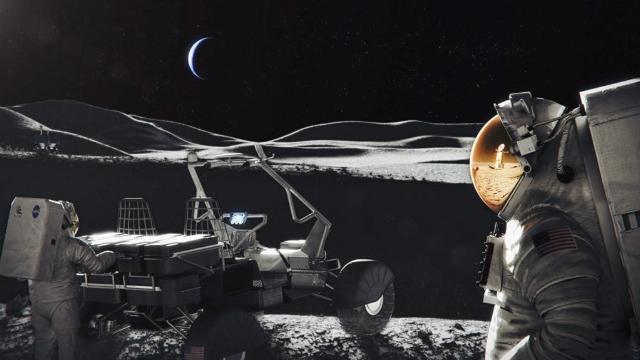The head of NASA's Lunar exploration systems division explained a previously unknown condition to the public for landing people on an Earth satellite in September 2026. Skeptics assessed this statement as the desire of the National Aeronautics and Space Administration of the United States to shift responsibility for the failure of the lunar landing to someone else.
Catherine Koerner, who previously headed NASA's manned flight program and is now responsible for the "research systems" for the Artemis program, answered questions from the American media about what next step SpaceX needs in order for the United States to be able to return people to the Moon in 2026. It is September of this year that the space agency still calls the landing date on an Earth satellite, although almost no one familiar with the space industry expects the plan to be fulfilled.
Kerner said that in order to keep NASA on the SpaceX schedule, it is necessary to perform cryogenic fuel pumping in Earth orbit under the contract. According to her, this should happen in early 2025.
Such a flight should involve quite complex manipulations. After launching one Starship from Earth, another "catching up" (Starship chaser) should be launched. Then they will dock in Earth orbit, and the "catch-up" will have to pump a certain amount of fuel to the main ship.
With the apparent simplicity of the description, all these are very complex operations. Both ships will have to dock in automatic mode. It is even more difficult to pump fuel: so far, no one in space has performed it in comparable volumes. The fact is that at least hundreds of tons of liquid methane and oxygen are needed to refuel the lunar version of Starship (Starship HLS).
Therefore, the volume of pumping from the "catching up" ship should be close to its entire practical payload (up to 100 tons). Until now, cryogenic fuel in orbit has not been pumped from one ship to another. Transferring a small volume of non-cryogenic fuel (that is, not needing cooling) is much easier technically.
Recall, before Artemis III (the planned flight to land an African American and a woman on the moon) The Starship HLS must be refueled from a special fuel storage ship. This should also be a Starship, which, in turn, will pre-refuel at least 10 flights of other Starship tankers. Liquid methane and oxygen in orbit are gradually boiling off, so the time for refueling the storage ship is limited to several months.
This places great demands on SpaceX's ground infrastructure. Since Starship-type ships are still far from being worked out, they can easily damage the launch towers on which the first and second stages of this system should descend. In Boca Chica (Texas, the main SpaceX spaceport under this program), there is only one working tower so far, the second is being completed. SpaceX plans to retrofit the second launch pad in Florida no earlier than the second half of 2025.
By the end of 2025, the next SpaceX demonstration mission is planned: it involves the automatic flight of Starship HLS to the Moon, landing there and taking off into lunar orbit. This is how the ship should simulate its actions during Artemis III in 2026.
 Shedule Chiken, known to the residents of Russia by the famous anecdote about a young specialist and an experienced mentor at the cosmodrome">
Shedule Chiken, known to the residents of Russia by the famous anecdote about a young specialist and an experienced mentor at the cosmodrome">
Ordinary commentators in the United States express more confidence in the readiness of Starship HLS by 2026 than the readiness of those landing components for which NASA is responsible. They also note that there is a game of Shedule Chiken, known to residents of Russia from a well-known anecdote about a young specialist and an experienced mentor at the cosmodrome
Image source: ArsTechnica
According to the plan, NASA will put the Orion spacecraft into orbit (on its own SLS rocket), it will fly to lunar orbit, two astronauts from there will transfer to Starship HLS, it will land on the Moon, where it will stay for a week. Then it will take off, dock with Orion again, after which the ship will return to Earth.
Naked Science previously wrote that today there are big doubts about the implementation of this plan on time. During the first unmanned flight of Orion in 2021, it turned out that upon returning to our planet, its heat shield was significantly damaged. In a good way, the shield needs to be modified, and then tested with another unmanned flight.
But this is practically unrealistic, because one such flight costs 4.3 billion dollars. For comparison: for the entire Starship HLS creation program, consisting of many dozens of flights, NASA will pay SpaceX only 2.6 billion. There are no more than four in the agency's budget — the probability of some problems with Orion was simply not taken into account there.
Another weak point is the spacesuits. Today, astronauts are practicing actions in the Starship airlock in suits with empty satchels (pictured). It is extremely difficult to make equipment for the Moon: American lunar spacesuits, in particular, had limited mobility in the knees and let air through after the first exit due to the use of lightning. A week-long mission on the moon with something of the same level is just dangerous. The new landing suits have not yet shown a sufficient level of readiness for landing in 2026.

The spacesuits in which NASA astronauts check the suitability of the Starship gateway to exit on the Moon
Image source: Space.com
In connection with all this, many in the United States believe that NASA is simply trying to shift responsibility for the inevitable disruption of the moon landing to SpaceX. However, this may not work out: Elon Musk's company is showing serious success in testing. It is highly likely that it will have time to show fuel pumping in orbit in the first quarter of 2025. In this case, the US National Aeronautics and Space Administration will have to look for another extreme.

